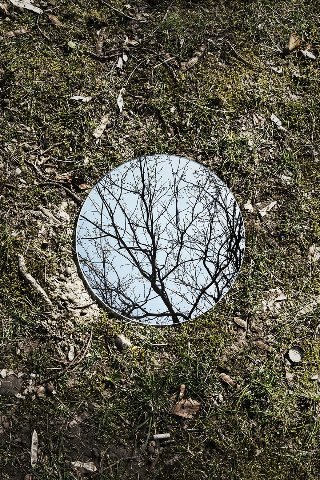The Unclouded Mirror
Reflecting The Wu Wei in Daoism
By: Cheng Tong - Jun 03, 2024
Still water runs deep,
No force, a gentle seep.
The willow sways in breeze,
Yielding, finds its ease.
Wu wei, the art of flow,
Letting nature show.
Effortless, the path unfolds,
Harmony to behold.
In the vast tapestry of Daoist thought, the mirror emerges as a potent symbol, not for vanity, but for cultivating a state of unclouded perception. Unlike a typical mirror, the ideal Daoist mirror reflects only what is truly present – the here and now, unfiltered by desires or judgments. This concept aligns with the core principle of Wu Wei (??; wú wéi), meaning effortless action or acting in accordance with the natural flow.
The Uncarved Block: A Perfect Reflection
The Dao Te Ching, a foundational Daoist text, compares the ideal state of a person to an uncarved block (???; Dì Y? Zh?ng). Just as a block of wood, untouched by human intervention, embodies its natural potential, so too should a person remain free from preconceptions and desires. Similarly, the perfect Daoist mirror wouldn’t distort reality with its own imperfections or biases. It would be a flawless surface, reflecting the world exactly as it is, without adding its own commentary.
This concept resonates with the Daoist emphasis on observing nature. By observing the effortless flow of a river or the unhurried movements of a bird, we can glean insights into the natural order (?; Dào). The ideal mirror, then, becomes a tool for observing the world with the same clarity and lack of intervention as nature itself.
Letting Go of Distortions: The Clouded Mirror
However, the Dao acknowledges the human tendency to distort perception. Just as a mirror can be clouded by dust or grime, our minds can be clouded by desires, anxieties, and preconceived notions. These “clouds” prevent us from seeing the world clearly and acting in accordance with the natural flow.
For instance, imagine a person looking into a mirror clouded with thoughts of inadequacy. They might not see their true potential, reflected back at them, but only flaws and shortcomings. This distorted reflection hinders their ability to act with Wu Wei, leading to struggles and disharmony.
Here, the Daoist concept of “wei wu wei” (????; wéi ér bù wéi) becomes relevant. It translates roughly to “acting through non-action,” implying that true action arises from a place of inner alignment with the Dao, not from the pursuit of personal desires. To achieve this alignment, we must first clear the “clouds” from our perception, allowing the mirror of our mind to reflect reality accurately.
Polishing the Mirror: Techniques for Clarity
Daoist practices offer various methods to polish the proverbial mirror. Here are a few key techniques:
- Meditation: Through meditation, we can cultivate a state of quiet observation, allowing thoughts and emotions to arise and pass without clinging to them. This quiets the inner chatter, allowing for a clearer reflection of the present moment.
- Nature observation: Immersing oneself in nature provides an opportunity to observe the effortless flow of the Dao in action. By observing, we learn to act in accordance with natural principles, leading to a more Wu Wei way of being.
- Letting go: Daoism emphasizes detachment from desires and clinging. By letting go of these attachments, we reduce the distortions that cloud our perception, allowing the true nature of reality to shine through.
The Mirror and the Sage: Reflecting the Dao
The Daoist ideal is the sage, a person who lives in harmony with the Dao. The sage’s actions are effortless and spontaneous, arising from a deep understanding of the natural order. Their mind, like a perfectly polished mirror, reflects the world without distortion.
This doesn’t imply passivity. The sage acts, but their actions are in perfect alignment with the flow of the Dao. They respond to situations as they arise, without forcing or manipulating. This is a state of true mastery, where action and inaction become indistinguishable.
Beyond Reflection: The Mirror as a Gateway
The Daoist mirror transcends mere reflection. It can also be seen as a gateway to the unity of all things. By cultivating an unclouded perception, we begin to see the interconnectedness of the universe. We recognize that the “self” is not a separate entity but rather part of a vast and ever-flowing whole.
Conclusion: A Path Towards Harmony
The Daoist mirror is a powerful symbol for cultivating clarity, letting go of distortions, and ultimately achieving harmony with the Dao. It serves as a reminder to observe the world with an open mind, free from preconceived notions. By polishing the mirror of our mind, we can tap into the effortless flow of Wu Wei and experience the interconnectedness of all things.
Note: This is the first of two reflections (pun intended) on the concept of wu wei. The second installment, with an eye toward some practical applications of “not forcing,” will be published soon.

